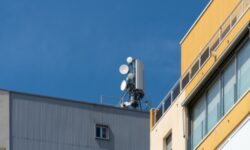Everything You Need to Know About Installing Bi-Directional Amplifiers
If you design, install or service fire alarm systems, you’ll want to get familiar with bi-directional amplifiers ahead of the updated NFPA 1.

(Image: Valmedia/stock.adobe.com)
This month’s column continues the discussion on bi-directorial amplifiers (BDA), or emergency responder communications enhancement system (ERCES). As jurisdictions adopt the next editions of either the International Fire Code or NFPA 1, Fire Code, the requirements for these systems will increase.
While these systems are not a fire alarm system and do not use a fire alarm control unit to operate, a firm that has a one of their primary services as the design, installation and servicing of fire alarm systems should at this time be looking at the addition of these systems to their offerings.
The primary document that is to be used is NFPA 1225, Standard for Emergency Services Communications. The first edition that has been published by the NFPA is the 2022 version. In addition to NFPA 1225, the designer or installer needs to know what the requirements of the jurisdiction is that the building is located within. The AHJ may not be the fire department on all occasions. These systems are used by all emergency responders, including law enforcement and emergency medical.
As I mentioned in my last column, there are four bands of frequencies that have been set aside by the FCC for use by public safety agencies. They are VHF (150-174MHz), UHF (450-512MHz) and the 700/800MHz bands. They may also now be the bands that the new FirstNET system uses. One needs to know the frequencies that are being used. This information should be made available by the AHJ.
There are a number of new terms that one needs to be aware of for these systems. The AHJ will reference these terms within their agency’s specifications. The system that is installed then needs to be able to meet these basic requirements.
I have already touched on frequencies. This is the first item within the predesign that needs to be checked off. Depending on the manufacturer of the product that you may be installing, it may require several BDAs to be installed within a structure. Once these are known, the site survey may proceed.
This is conducted for each frequency at typically within 20-foot grids within each building, per floor. In addition, critical areas such as stairwells, fire command rooms, fire pump rooms electrical rooms and the like also need to be included.
The signal that is received during the survey needs to be either no lower than -90dBm or have a delivered audio quality (DAQ) of 3.0 or greater, with the preferred minimum being 3.4. The DAQ method is becoming the preferred method of determining if a system will be required. DAQ is defined within 1225 as “A measure of speech intelligibility of land mobile units.”
Part of this testing is to determine if the uplink and downlink can, throughout a building, maintain the required signal strength for communications within and outside of the building. The downlink is the signal from the base station to the portable radios. The uplink is the signal from the portable radios to the base station.
One should become familiar with Chapter 18 and the associated annex to this chapter within 1225 on the specific requirements for the conducting of a site survey. All product manufacturers also provide training on how to conduct a proper site survey.
Part of the survey is to spot the location of the donor antenna. Each DBA that is to be installed within a building will require a donor antenna. The donor antenna will in most cases be mounted on the roof and have a direct line-of-site view of the radio systems transmitting site.
If a jurisdiction does utilize more than one band, a donor antenna for each band will be required, and may be directed toward different locations. The AHJ or license holder should have the locations of each of their transmitting sites. It is important that the donor antennas do not cross each other. The donor antennas will be a Yagi antenna.
The connection from the donor antenna to the BDA will in most cases utilize a two-hour fire resistive coaxial cable. Depending on the size of the structure and number of floors, the DBA may not be mounted directly near the fire alarm control unit or on the grade floor.
While multiple BDAs and donor antennas may be required, the distributed antenna system (DAS) within the building uses the same antennas for all frequencies. The connections to these antennas may be through the use of coax or fiber. The location of these antennas is based on the survey that was conducted and the final design of the system.
Next month, I will cover more of the basic system requirements and the required site testing for these systems.
If you enjoyed this article and want to receive more valuable industry content like this, click here to sign up for our FREE digital newsletters!

Security Is Our Business, Too
For professionals who recommend, buy and install all types of electronic security equipment, a free subscription to Commercial Integrator + Security Sales & Integration is like having a consultant on call. You’ll find an ideal balance of technology and business coverage, with installation tips and techniques for products and updates on how to add to your bottom line.
A FREE subscription to the top resource for security and integration industry will prove to be invaluable.









Good Evening,
Thank you for the information you’ve provided regarding a BDA system in your article, “Everything You Need to Know About Installing Bi-Directional Amplifiers.”
In it you indicate “Depending on the size of the structure and number of floors, the DBA may not be mounted directly near the fire alarm control unit or on the grade floor.”
I am curious, what dictates the BDA device location specifically? Is this code driven to be at a top floor, or is it a response to the design and the signal boosting it can achieve in any given location, or have I missed the mark here?
I look forward to your reply.
Kind Regards,
Robb Van Marter